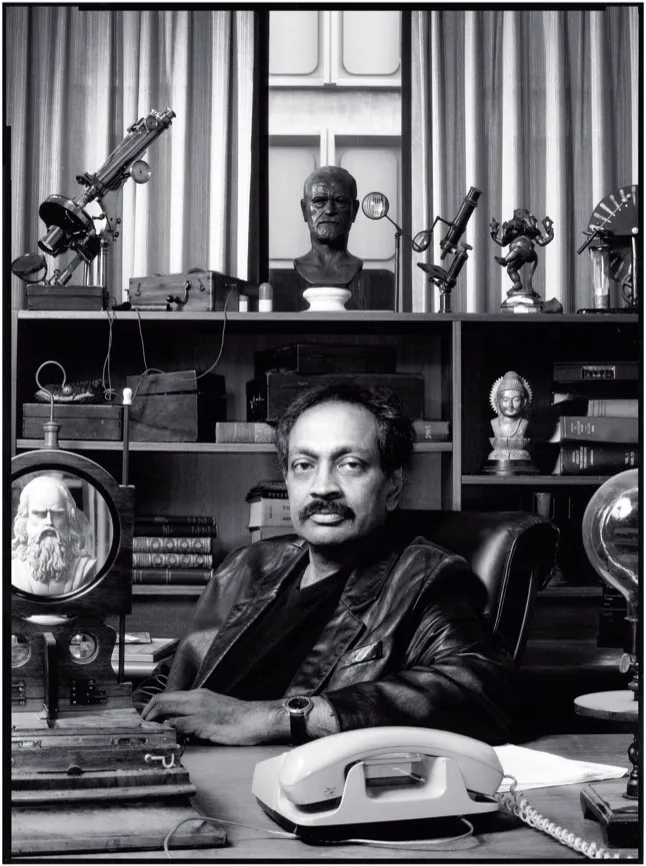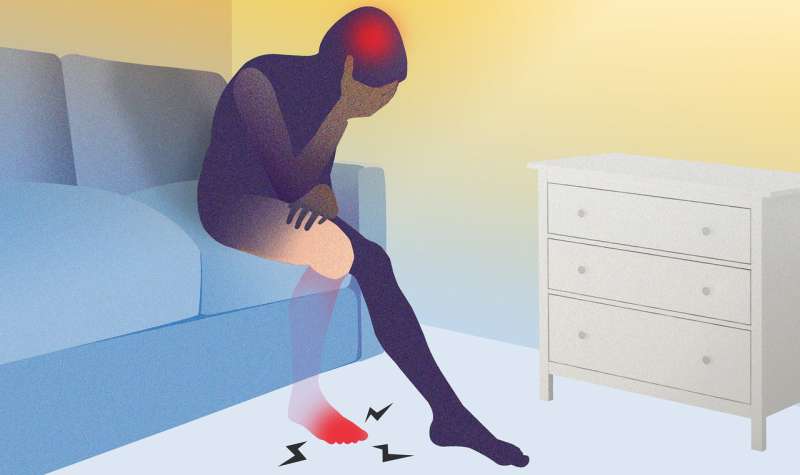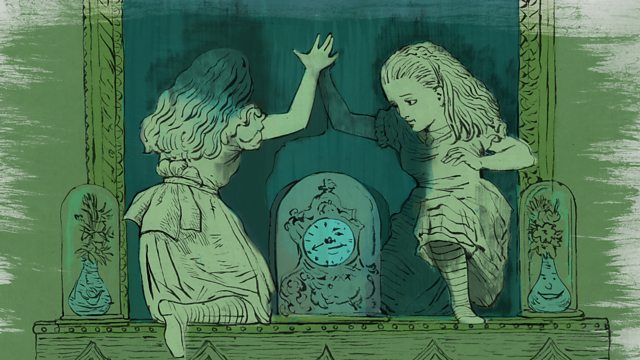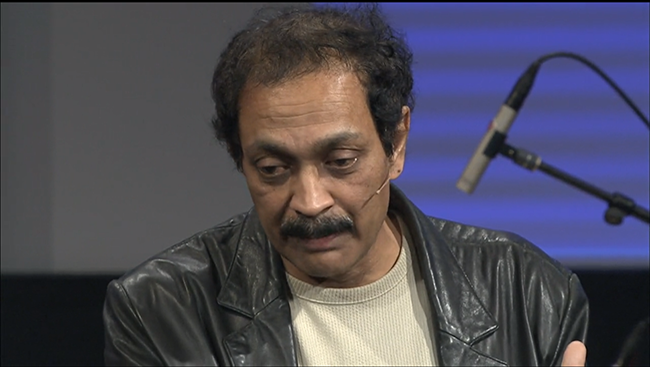Contents
Introduction
Vilayanur S. Ramachandran is a renowned Indian-American neuroscientist known for his pioneering work in the fields of behavioral neurology and visual psychophysics. Ramachandran’s research has significantly advanced our understanding of the human brain, particularly in areas related to perception, cognition, and neurological disorders. His contributions have had a profound impact on neuroscience, psychology, and the treatment of neurological conditions. Ramachandran’s innovative approaches and theories have made him a key figure in the study of the brain and its complex functions.

In this article, we will explore Vilayanur S. Ramachandran’s pioneering research in behavioral neurology and visual psychophysics, examining how his work has advanced our understanding of the human brain, perception, cognition, and neurological disorders.
Early Life and Education
Vilayanur Subramanian Ramachandran was born on August 10, 1951, in Tamil Nadu, India. Growing up in a family that valued education and intellectual pursuits, Ramachandran developed an early interest in science and medicine. His father, V. M. Subramanian, was a prominent engineer, and his mother, Rajalakshmi, was a homemaker who encouraged his curiosity and learning. Ramachandran’s fascination with the human brain began at an early age. His childhood experiences and academic pursuits set the foundation for his future career as a leading neuroscientist.
Image Source: Ramachandran favors a low-tech experimental method, which “forces you to be ingenious.”Photograph by Dan Winters

Educational Journey
| Aspect | Details |
| Early Education | Ramachandran attended local schools in Tamil Nadu, where he excelled in science and mathematics. |
| Stanley Medical College | Ramachandran earned his Bachelor of Medicine, Bachelor of Surgery (MBBS) degree in 1974. |
| University of Cambridge | Ramachandran pursued his Ph.D. in Neurophysiology, focusing on visual perception and neural mechanisms, completing his dissertation under the supervision of R. W. Rodieck in 1978. |
| Academic Career | After completing his doctorate, Ramachandran held academic positions at various institutions, including the University of California, San Diego, where he has been a professor and the director of the Center for Brain and Cognition. |
Timeline of Early Influences
| Aspect | Details |
| Oliver Sacks | Sacks’s work on neurological disorders and case studies significantly influenced Ramachandran’s approach to understanding the brain. |
| Francis Crick | Crick’s research on the neural basis of consciousness inspired Ramachandran’s exploration of the brain’s complex functions. |
| Richard Gregory | Gregory’s work on visual perception and illusions provided a foundation for Ramachandran’s studies on perception and cognition. |
| Paul Brand | Brand’s work on pain and phantom limb phenomena influenced Ramachandran’s research on neurological disorders and rehabilitation. |
Major Theories and Works

Phantom Limb Syndrome
One of Vilayanur S. Ramachandran’s most notable contributions is his research on phantom limb syndrome, a condition where amputees continue to feel sensations, including pain, in the missing limb. Key elements include:
- Neural Plasticity: Ramachandran’s research highlights the brain’s ability to reorganize and adapt, which is crucial for understanding and treating phantom limb pain.
- Somatosensory Cortex Reorganization: The brain’s representation of the body can change after an amputation, leading to sensations in the missing limb.
- Mirror Box Therapy: A method that uses visual feedback to create the illusion of the missing limb, helping to alleviate phantom limb pain by rewiring the brain’s sensory processing.
Image Source: btlaseracupuncture.com

Capgras Delusion
Ramachandran has also conducted extensive research on Capgras delusion, a psychiatric disorder where individuals believe that their loved ones have been replaced by impostors. Key elements include:
- Disconnection Between Brain Regions: The delusion arises from a disruption in the connection between the fusiform gyrus (for face recognition) and the limbic system (for emotional processing).
- Face Recognition vs. Emotional Response: Affected individuals can recognize faces but lack the emotional connection, leading to the belief that familiar people are impostors.
- Understanding Through Neurological Mechanisms: Ramachandran’s research highlights how disruptions in brain mechanisms can lead to Capgras delusion, offering insights into the role of neural pathways in emotional and cognitive processing.
Image Source: bbc.co.uk

Synesthesia
In his studies on synesthesia, Ramachandran explored how some individuals experience a blending of senses, such as seeing colors when hearing music or tasting flavors when reading words. Key elements include:
- Insights into Perception: Studying synesthesia helps understand sensory integration and the brain’s ability to process and combine multiple types of sensory input, offering broader insights into perceptual and cognitive processes.
- Cross-Modal Sensory Experiences: Synesthesia involves involuntary cross-sensory experiences, such as seeing colors when hearing music or associating specific tastes with certain words.
- Neurological Mechanisms: Ramachandran’s research suggests that synesthesia may result from increased connectivity between sensory regions in the brain, leading to the blending of sensory modalities.
Image Source: allaboutvision.com/

Theories on Consciousness
Ramachandran has contributed to theories on the neural basis of consciousness. He has explored how specific brain regions and networks contribute to the experience of consciousness and self-awareness. His research suggests that the brain’s ability to create a unified sense of self and reality is linked to the integration of sensory inputs and higher-order cognitive processes.
Ramachandran’s work on consciousness has provided valuable insights into the neural correlates of conscious experience and has implications for understanding disorders of consciousness, such as coma and vegetative states.
Image Source: newscientist.com
Psychologists Influenced by Ramachandran

- Oliver Sacks – Sacks’s work on neurological disorders and patient case studies has been reciprocally influenced by Ramachandran’s research on neural plasticity and perception (Sacks, 1995).
- Eric Kandel – Kandel’s research on the neural mechanisms of memory and learning has drawn from Ramachandran’s findings on brain plasticity and sensory processing (Kandel, 2006).
- Antonio Damasio – Damasio’s studies on emotion and consciousness have been influenced by Ramachandran’s exploration of the neural basis of self-awareness and perception (Damasio, 1994).
- David Eagleman – Eagleman’s work on the neuroscience of time perception and consciousness has been shaped by Ramachandran’s innovative approaches to studying the brain (Eagleman, 2011).
- Bruce Hood – Hood’s research on developmental psychology and the origins of supernatural beliefs has been influenced by Ramachandran’s theories on perception and cognitive development (Hood, 2009).
Impact on Psychology
Influence on Modern Thought
Vilayanur S. Ramachandran’s ideas have had a profound impact on various fields within neuroscience, psychology, and medicine. His theories on phantom limb syndrome, Capgrasdelusion, synesthesia, and consciousness have transformed our understanding of how the brain processes sensory information and constructs reality. Ramachandran’s innovative approaches to studying the brain have influenced research methodologies, promoting the use of neuroimaging, behavioral experiments, and patient case studies to explore complex neurological phenomena. His contributions have been instrumental in bridging the gap between clinical practice and basic neuroscience research, providing new insights into the treatment and rehabilitation of neurological disorders.
Legacy and Influence
- Long-Term Impact: Vilayanur S. Ramachandran’s legacy endures through his lasting contributions to neuroscience, psychology, and clinical practice. His pioneering work on phantom limb syndrome, synesthesia, and the neural basis of consciousness has laid the foundation for numerous subsequent theories and research. Ramachandran’s emphasis on understanding the brain’s plasticity and adaptability continues to influence contemporary research and practice. His ability to communicate complex scientific ideas to both academic and public audiences has made him a key figure in promoting scientific literacy and fostering dialogue on critical issues related to brain function and behavior.
- Recognition and Honors: Ramachandran has received numerous accolades and recognition for his work. He has been a frequent speaker at academic conferences and public forums, and his books have received critical acclaim and widespread readership. Ramachandran’s contributions to neuroscience and public understanding of science have been acknowledged through various awards and honors, including the Ariëns Kappers Medal and the Padma Bhushan, one of India’s highest civilian honors. His efforts to promote scientific literacy and critical thinking have been widely celebrated.
- Criticism and Controversies: While Vilayanur S. Ramachandran has garnered significant recognition for his contributions to neuroscience and psychology, his work has not been without criticism. Some argue that the speculative nature of some of his theories, particularly on synesthesia and neural plasticity, may require further empirical validation. Additionally, the popular nature of his writing has sparked debate, with critics suggesting that it may oversimplify complex neurological phenomena. Despite these criticisms, Ramachandran’s commitment to promoting scientific literacy and critical thinking continues to inspire debate and further investigation in the fields of neuroscience and beyond.
Conclusion
Vilayanur S. Ramachandran’s life and work have profoundly shaped the fields of neuroscience, psychology, and clinical practice. His theories on phantom limb syndrome, synesthesia, Capgras delusion, and consciousness offer valuable insights into brain function and the complexities of human perception and behavior. By emphasizing the importance of understanding neural plasticity and sensory processing, Ramachandran has provided a comprehensive framework for enhancing clinical treatments and advancing scientific knowledge. As his legacy continues to unfold, Ramachandran’s contributions to neuroscience, psychology, and public engagement will likely inspire future generations of researchers, educators, and practitioners.
Bibliography
- [1] Blackmore, S. (1996). Test Your Psychic Powers: Find Out the Truth with These Simple Experiments. London: Thorsons.
- [2] Brown, D. (2006). Tricks of the Mind. London: Channel 4 Books.
- [3] Damasio, A. (1994). Descartes’ Error: Emotion, Reason, and the Human Brain. New York: Putnam.
- [4] Hood, B. (2009). SuperSense: Why We Believe in the Unbelievable. New York: HarperOne.
- [5] Kandel, E. R. (2006). In Search of Memory: The Emergence of a New Science of Mind. New York: W. W. Norton.
- [6] Ramachandran, V. S. (1994). Encyclopedia of Human Behavior. San Diego: Academic Press.
- [7] Ramachandran, V. S. (2003). The Emerging Mind: The Reith Lectures 2003. London: Profile Books.
- [8] Ramachandran, V. S. (2004). A Brief Tour of Human Consciousness: From Impostor Poodles to Purple Numbers. New York: Pi Press.
- [9] Ramachandran, V. S. (2010). The Tell-Tale Brain: A Neuroscientist’s Quest for What Makes Us Human. New York: W. W. Norton.
- [10] Sacks, O. (1995). An Anthropologist on Mars: Seven Paradoxical Tales. New York: Alfred A. Knopf.






